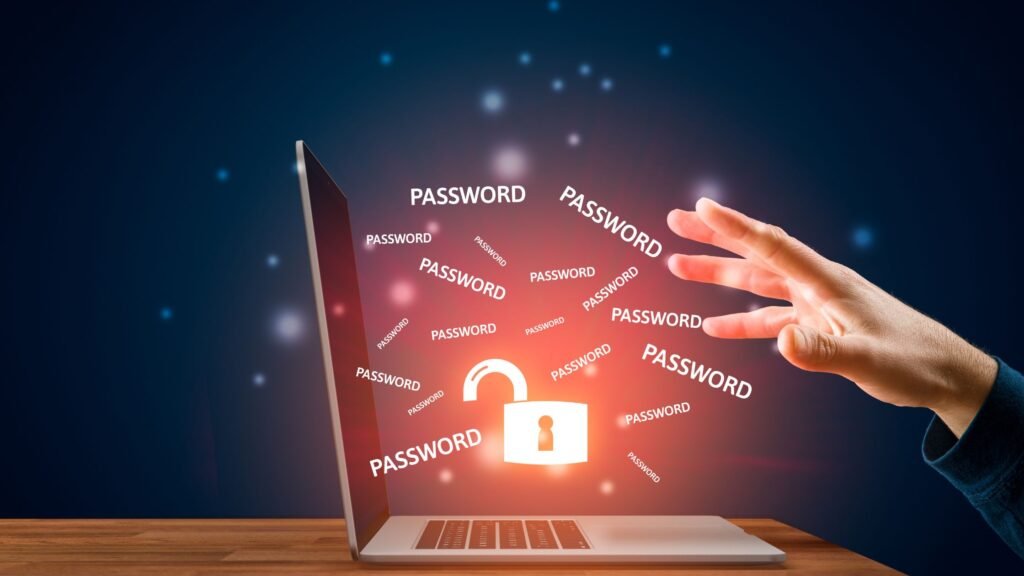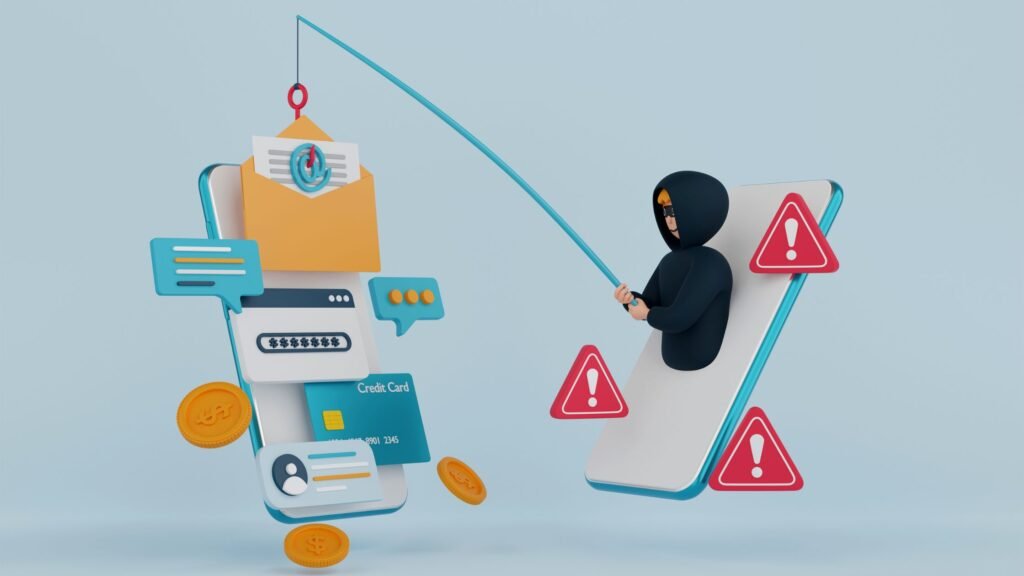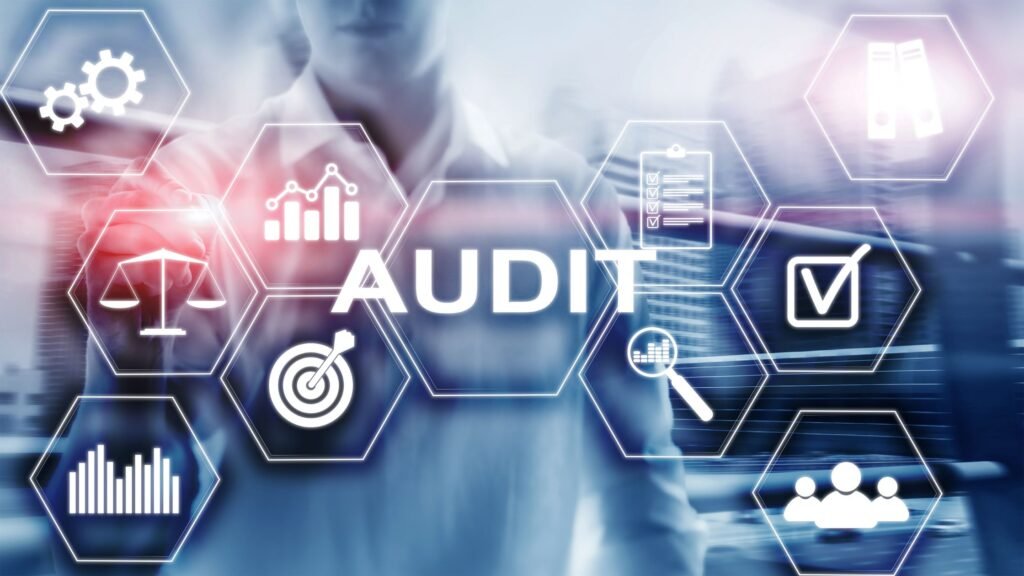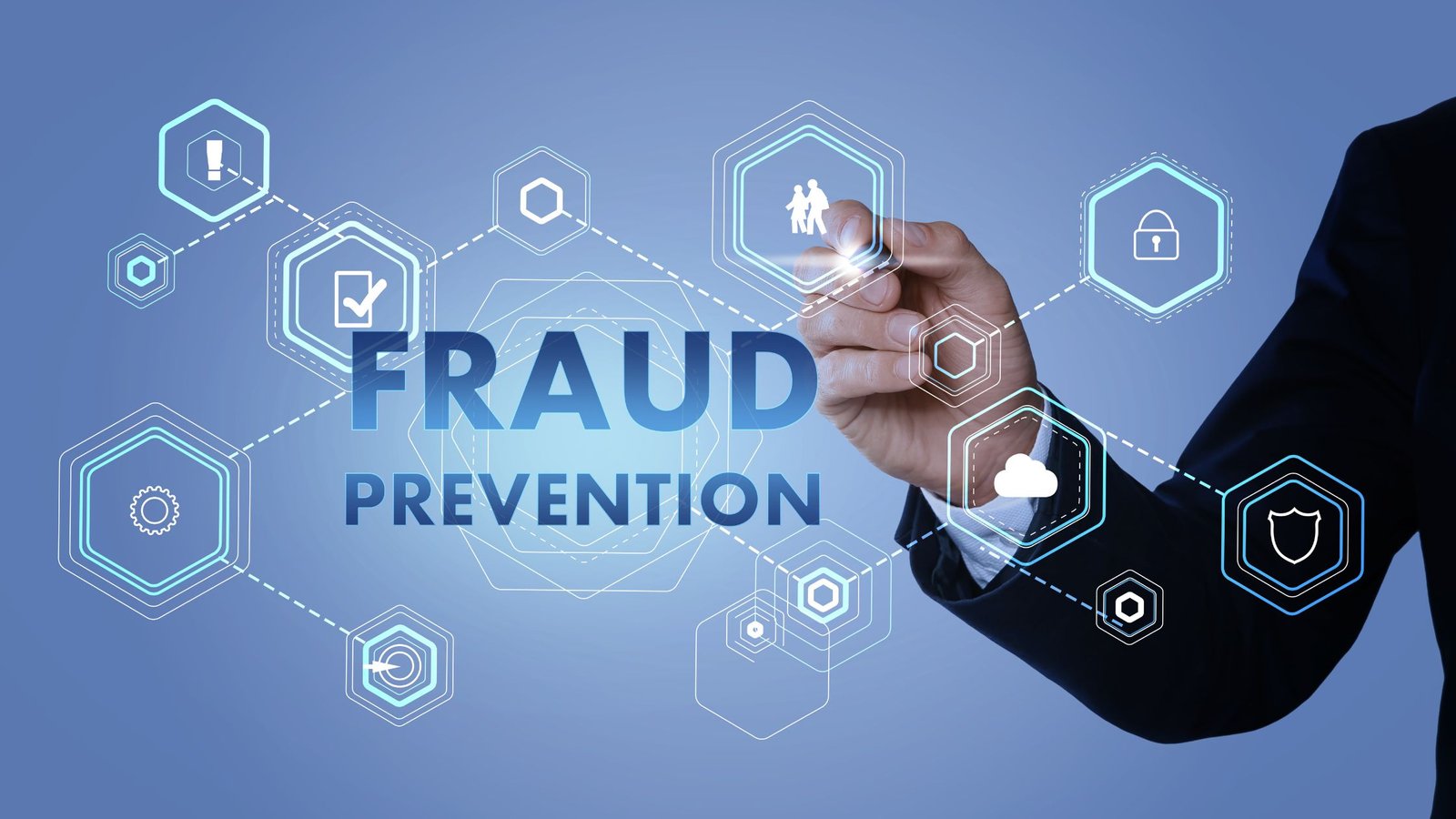In today’s digital age, online fraud has become a significant concern for individuals and businesses alike. With the increasing use of the internet for various activities such as online shopping, banking, and social media, it is crucial to take necessary precautions to protect ourselves from falling victim to online fraud. In this article, we will discuss some effective strategies for How to Prevent Online Fraud and safeguarding our personal and financial information.
Table of Contents
1. Create Strong and Unique Passwords
One of the simplest yet most effective ways to prevent online fraud is by creating strong and unique passwords for all your online accounts. Avoid using easily guessable passwords such as your birthdate or common phrases. Instead, opt for a combination of uppercase and lowercase letters, numbers, and special characters. Additionally, using a different password for each online account is essential to minimize the risk of multiple accounts being compromised if one password is breached.
Strong and Unique Passwords: Protecting Your Online Security
In today’s digital era, where almost every aspect of our lives is connected to the internet, it is crucial to prioritize online security. One of the simplest yet most effective measures we can take to protect ourselves is by creating strong and unique passwords.

The Importance of Strong Passwords
Passwords serve as the first line of defense against unauthorized access to our online accounts. A weak or easily guessable password can leave us vulnerable to various forms of online threats, including hacking, identity theft, and data breaches. By creating strong and unique passwords, we significantly enhance our online security and reduce the risk of falling victim to cybercriminals.
Tips for Creating Strong and Unique Passwords
- Length Matters: Opt for passwords that are at least 12 characters long. The longer the password, the more challenging it becomes for hackers to crack it.
- Use a Combination of Characters: A strong password should include a mix of uppercase and lowercase letters, numbers, and special characters. Avoid predictable patterns or common phrases, as they are easy to guess.
- Avoid Personal Information: Steer clear of using personal information such as your name, birth date, or address in your passwords. This information can be easily obtained or guessed by cyber criminals.
- Don’t Reuse Passwords: It is crucial to use a unique password for each online account you have. Reusing passwords across multiple accounts increases the risk of multiple accounts being compromised if one password is breached.
- Use Passphrases: Instead of a single word, consider using a passphrase consisting of multiple words. Passphrases are generally longer, easier to remember, and more secure than traditional passwords. For example, “SunshineLemonClouds” is a strong passphrase.
- Randomize Passwords: Avoid using common patterns or sequences, such as “123456” or “qwerty.” These passwords are easily guessable and should be avoided.
- Use a Password Manager: Consider using a reputable password manager to generate and store your passwords securely. Password managers can generate complex passwords and automatically fill them in when needed.
Managing Your Passwords
Creating strong and unique passwords is essential, but it is equally important to manage them effectively. Here are some tips for password management:
- Update Regularly: Regularly update your passwords, ideally every three to six months. This practice ensures that even if a password is compromised, it becomes outdated and less useful to hackers.
- Enable Two-Factor Authentication (2FA): Enable two-factor authentication whenever possible. This additional layer of security requires a second form of verification, such as a fingerprint scan or a unique code sent to your mobile device, along with your password.
- Don’t Share or Write Down Passwords: Avoid sharing your passwords with anyone, including friends or family members. Additionally, refrain from writing passwords down on sticky notes or storing them in unsecured digital documents.
- Be Wary of Phishing Attempts: Stay vigilant against phishing attempts that aim to trick you into revealing your password. Be cautious of suspicious emails or messages that ask for personal information.
- Regularly Monitor Your Accounts: Keep an eye on your online accounts for any signs of suspicious activity. If you notice any unauthorized access or unusual behavior, change your password immediately and report it to the relevant service provider.
By following these guidelines and implementing strong and unique passwords, you can significantly enhance your online security and protect your valuable personal and financial information from cyber threats.
2. Be Cautious of Phishing Emails and Scams
Phishing emails and scams are common methods used by fraudsters to trick individuals into revealing sensitive information or clicking on malicious links. Be vigilant while opening emails from unknown sources and avoid clicking on suspicious links or downloading attachments. Legitimate organizations will never ask you to provide personal information through email. If you receive an email asking for sensitive data or directing you to a suspicious website, it is best to verify the source before taking any action.
Cautious of Phishing Emails and Scams: Protecting Yourself Online
In today’s digital landscape, where email communication has become an integral part of our lives, it is crucial to be cautious of phishing emails and scams. Phishing is a fraudulent practice employed by cybercriminals to deceive individuals into revealing sensitive information, such as usernames, passwords, or credit card details.

Understanding Phishing Emails and Scams
Phishing emails and scams are designed to appear legitimate and trustworthy, often imitating reputable organizations or individuals. The goal is to trick recipients into divulging personal information or clicking on malicious links that can lead to identity theft, financial loss, or unauthorized access to sensitive data.
Phishing scams can take various forms, such as:
- Email Spoofing: Cybercriminals send emails that appear to come from a trusted source, such as a bank, government agency, or well-known company. They aim to convince recipients to click on links or provide personal information.
- Fake Websites: Scammers create deceptive websites that closely resemble legitimate ones. They trick users into entering their login credentials or financial information, which is then captured by the attackers.
- Social Engineering: Attackers may impersonate someone known to the recipient, such as a friend, family member, or colleague. They might request sensitive information or financial assistance, preying on the trust established with the individual.
Identifying Phishing Emails and Scams
Recognizing phishing emails and scams is crucial in protecting yourself online. Here are some common signs to watch out for:
- Unusual Email Addresses: Check the sender’s email address carefully. Phishing emails often use addresses that mimic legitimate organizations but contain slight variations or unfamiliar domains.
- Urgency and Fear Tactics: Phishing emails often create a sense of urgency, warning of consequences if immediate action is not taken. They may threaten account suspension, legal action, or loss of access to services.
- Poor Grammar and Spelling: Phishing emails often contain grammatical errors, typos, or awkward language. Legitimate organizations typically maintain high standards of communication.
- Requests for Personal Information: Be cautious of emails requesting personal information, such as passwords, Social Security numbers, or credit card details. Legitimate organizations rarely ask for such information via email.
- Suspicious Links or Attachments: Avoid clicking on links or downloading attachments from unknown sources. Hover over links to reveal the actual web address and ensure it matches the expected destination.
Protecting Yourself from Phishing Emails and Scams
Follow these best practices to protect yourself from phishing emails and scams:
- Be Vigilant: Stay alert and skeptical of unsolicited emails or messages. Exercise caution even if they appear to be from familiar sources. When in doubt, contact the organization directly using verified contact information.
- Verify the Source: Before providing any personal information or clicking on links, verify the authenticity of the email or website. Cross-reference contact details with official sources or contact the organization directly through trusted channels.
- Use Security Software: Install and regularly update reputable antivirus and anti-malware software on your devices. These tools can detect and block known phishing threats.
- Educate Yourself: Stay informed about the latest phishing techniques and scams. Keep up-to-date with security awareness training and resources provided by reputable sources.
- Report Suspicious Emails: If you receive a phishing email, report it to your email provider or the organization being impersonated. This helps in taking action against the attackers and protects others from falling victim to the same scam.
Remember, being cautious and proactive is essential to protect yourself from phishing emails and scams. By staying informed, verifying the source, and adopting best practices, you can safeguard your personal information and enjoy a safer online experience.
Also read this: How to Download YouTube Videos
3. Keep Your Devices Updated
Regularly updating your devices, including smartphones, tablets, and computers, is vital to prevent online fraud. Software updates often include security patches that address vulnerabilities and protect your device from potential threats. Enable automatic updates whenever possible to ensure that you are using the latest versions of operating systems and applications.
Keep Your Devices Updated: Enhancing Online Security
In today’s digital landscape, where technology plays a vital role in our daily lives, it is crucial to keep our devices updated. Regularly updating your devices, including smartphones, tablets, and computers, is an essential practice that helps enhance your online security and protect against various cyber threats.

The Significance of Device Updates
Device updates, whether they are operating system updates or application patches, serve several critical purposes in safeguarding your online security:
- Security Patches: Updates often include security patches that address vulnerabilities discovered in previous versions. Cybercriminals are constantly evolving their tactics, and software vulnerabilities can be exploited to gain unauthorized access to your devices or sensitive data. Regular updates ensure that these vulnerabilities are patched, reducing the risk of security breaches.
- Bug Fixes and Performance Enhancements: Updates not only address security issues but also fix bugs and improve overall system performance. By applying updates, you ensure that your devices operate smoothly and efficiently, minimizing the chances of encountering technical glitches or errors.
- Compatibility with New Technologies: Updates are designed to ensure compatibility with new technologies, applications, and online services. Staying up to date allows you to take advantage of the latest features and functionalities offered by these advancements while maintaining a secure and seamless user experience.
Tips for Keeping Your Devices Updated
- Enable Automatic Updates: Most operating systems and applications provide the option to enable automatic updates. It is highly recommended to activate this feature so that your devices receive updates promptly without requiring manual intervention. Automatic updates ensure that you are always running the latest version, with the most recent security patches and bug fixes.
- Stay Informed: Stay informed about the latest updates released by device manufacturers and software developers. Follow official sources such as the manufacturer’s website, support forums, or official social media channels to receive updates and announcements about new releases.
- Update All Devices: Remember to update all your devices regularly, including smartphones, tablets, computers, and other internet-connected devices such as smart TVs and IoT devices. Cyber threats can target any device connected to the internet, and each device requires regular updates to maintain optimal security.
- Backup Your Data: Before applying any updates, it is wise to back up your important data to an external storage device or cloud service. Although rare, updates can sometimes lead to unexpected issues. Having a backup ensures that you can restore your data in case of any complications during the update process.
- Update Applications: In addition to operating system updates, it is essential to update all installed applications regularly. Application updates often include bug fixes, performance improvements, and security enhancements. Ensure that you regularly check for updates in the respective app stores or enable automatic updates for applications, if available.
- Secure Your Wi-Fi Network: A secure Wi-Fi network is crucial for maintaining device security. Regularly update the firmware of your wireless router to ensure it has the latest security patches and features. Use strong passwords for your Wi-Fi network and consider implementing additional security measures such as encryption and network segmentation.
By following these tips and keeping your devices updated, you significantly enhance your online security and reduce the risk of falling victim to cyber threats. Remember, staying vigilant and proactive in maintaining a secure digital environment is essential for a safe and enjoyable online experience.
4. Use Secure Wi-Fi Networks
When accessing the internet, especially for sensitive transactions, it is crucial to use secure Wi-Fi networks. Public Wi-Fi networks are often unsecured and can be easily exploited by hackers. Avoid accessing or providing sensitive information, such as credit card details or login credentials, while connected to public Wi-Fi. Instead, use a secure and private network or consider using a virtual private network (VPN) for an added layer of protection.
Secure Wi-Fi Networks: Protecting Your Wireless Connection
In today’s interconnected world, where we rely heavily on wireless networks for our internet access, securing our Wi-Fi networks is of utmost importance. Wi-Fi networks are often targeted by cybercriminals seeking to gain unauthorized access to sensitive information or exploit vulnerabilities.

Why Secure Your Wi-Fi Network?
Securing your Wi-Fi network offers several important benefits, including:
- Preventing Unauthorized Access: By securing your Wi-Fi network, you ensure that only authorized individuals can connect. Unauthorized access to your network can lead to privacy breaches, unauthorized usage, and potential exposure of sensitive data.
- Protecting Personal Information: A secure Wi-Fi network helps protect the personal information transmitted over the network. This includes usernames, passwords, financial details, and other confidential data shared between devices connected to the network.
- Preventing Malicious Activities: Securing your Wi-Fi network reduces the risk of cybercriminals using your network for malicious activities, such as launching attacks on other devices or networks, distributing malware, or engaging in illegal activities.
Tips for Securing Your Wi-Fi Network
Follow these practical tips to enhance the security of your Wi-Fi network:
- Change the Default Network Name (SSID): The default network name (SSID) provided by your router manufacturer can make it easier for hackers to identify the type of router you are using. Change the default SSID to a unique name that does not reveal any personal information.
- Set a Strong Password: Use a strong, complex password for your Wi-Fi network. Avoid common passwords or easily guessable phrases. A strong password should include a combination of uppercase and lowercase letters, numbers, and special characters.
- Enable Network Encryption: Enable WPA2 (Wi-Fi Protected Access II) or WPA3 encryption on your Wi-Fi network. Encryption helps protect the data transmitted over the network, making it difficult for unauthorized individuals to intercept and decipher the information.
- Use a Secure Encryption Key: When setting up encryption, choose a strong encryption key or passphrase. A longer passphrase, consisting of multiple words, is generally more secure than a simple password. Avoid using personal information or easily guessable phrases.
- Disable Remote Management: Disable remote management on your router. This prevents external access to your router’s administration settings, reducing the risk of unauthorized configuration changes.
- Keep Router Firmware Updated: Regularly check for firmware updates provided by the router manufacturer. Firmware updates often include security patches and bug fixes that address vulnerabilities. Keep your router firmware up to date to ensure optimal security.
- Disable SSID Broadcast: Disable the broadcasting of your network’s SSID. This makes your Wi-Fi network invisible to unauthorized users scanning for available networks. You can manually enter the network name on trusted devices to connect to the network.
- Enable MAC Address Filtering: MAC (Media Access Control) address filtering allows you to specify which devices are allowed to connect to your network based on their unique MAC addresses. Enable this feature and add the MAC addresses of your trusted devices to enhance network security.
- Regularly Check Connected Devices: Periodically review the list of connected devices on your router’s administration settings. If you notice any unfamiliar devices, investigate and take the necessary action to secure your network.
- Disable Guest Network: If you have a guest network feature on your router, disable it when not in use. Guest networks provide separate access for visitors, helping to isolate their devices from your primary network.
By following these tips and implementing proper security measures, you can significantly enhance the security of your Wi-Fi network. Remember to regularly review and update your network settings to stay ahead of potential security threats.
5. Regularly Monitor Your Financial Statements
To detect any suspicious activity, it is essential to regularly monitor your financial statements, including bank statements and credit card bills. Check for any unauthorized transactions or unfamiliar charges and report them immediately to your financial institution. By promptly reviewing your statements, you can identify and address potential fraud instances before they cause significant harm.
Monitor Your Financial Statements: Safeguarding Your Finances
Monitoring your financial statements is an essential practice for safeguarding your finances and protecting yourself from potential fraud or unauthorized transactions. By regularly reviewing your bank statements, credit card statements, and other financial documents, you can detect any suspicious activities and take immediate action to mitigate potential risks.

The Importance of Monitoring Financial Statements
Monitoring your financial statements serves several crucial purposes in maintaining the security of your finances:
- Early Detection of Unauthorized Transactions: Regularly reviewing your financial statements allows you to identify any unauthorized transactions or fraudulent activities promptly. This could include unfamiliar charges, unauthorized withdrawals, or suspicious activity on your accounts.
- Prevention of Identity Theft: Monitoring your financial statements helps in detecting signs of identity theft, where someone unlawfully uses your personal information for fraudulent purposes. By reviewing your statements, you can identify any unfamiliar accounts, unauthorized applications, or changes in personal information associated with your accounts.
- Timely Resolution of Errors: Financial statements may occasionally contain errors, such as duplicate charges, incorrect billing, or miscalculations. By monitoring your statements, you can identify these errors and promptly contact your financial institution to rectify them, ensuring accurate records and preventing any potential financial discrepancies.
- Maintaining Financial Discipline: Regularly reviewing your financial statements promotes financial discipline and accountability. It allows you to assess your spending habits, track your expenses, and identify areas where you can make adjustments to achieve your financial goals.
Tips for Effective Monitoring of Financial Statements
To effectively monitor your financial statements and protect your finances, consider the following tips:
- Review Statements Regularly: Set aside time each month to review your financial statements thoroughly. This includes bank statements, credit card statements, investment account statements, and any other financial documents. Pay close attention to transaction details, dates, and amounts.
- Check for Unfamiliar Transactions: Look for any transactions that you do not recognize or remember making. Verify the legitimacy of these transactions with your financial institution. It is better to investigate and address any potential issues early rather than ignore them.
- Monitor Account Balances: Keep track of your account balances to ensure they align with your records. Any significant discrepancies could indicate unauthorized transactions or errors.
- Leverage Online Banking and Mobile Apps: Take advantage of online banking and mobile apps provided by your financial institution. These tools often offer real-time transaction alerts, allowing you to stay updated on your account activities and receive notifications of any unusual transactions.
- Report Suspicious Activities Promptly: If you identify any suspicious or unauthorized transactions, contact your financial institution immediately. They can guide you on the necessary steps to report the activity, freeze your accounts if necessary, and initiate investigations.
- Secure Your Personal Information: Protect your personal information to minimize the risk of unauthorized access to your accounts. Use strong and unique passwords, enable multi-factor authentication, and be cautious when sharing personal information online or over the phone.
- Monitor Credit Reports: Regularly obtain and review your credit reports from major credit bureaus. Look for any unauthorized accounts or suspicious activities that could indicate identity theft. Report any discrepancies promptly.
By following these tips and maintaining an active role in monitoring your financial statements, you can protect yourself from fraud, detect any potential issues early, and maintain financial security.
Also read this: The Power of Social Media: A Detailed Overview and Types
6. Educate Yourself about Online Fraud
Staying informed about the latest online fraud techniques and scams is crucial in preventing fraud. Take the time to educate yourself about common online fraud schemes, such as identity theft, phishing, and malware attacks. Be wary of unsolicited phone calls or messages asking for personal information, and be cautious when sharing sensitive data online.
Educate Yourself about Online Fraud: Strengthening Your Awareness
In today’s digital age, where online transactions and interactions have become the norm, it is crucial to educate yourself about online fraud and scams. Online fraud encompasses a wide range of deceptive practices that aim to trick individuals into revealing sensitive information or parting with their hard-earned money. By enhancing your awareness and understanding of online fraud, you can protect yourself from falling victim to these malicious activities.

Why Educate Yourself about Online Fraud?
Educating yourself about online fraud empowers you with knowledge and strategies to:
- Recognize Common Scams: Understanding the common types of online fraud and scams helps you recognize warning signs and red flags. By familiarizing yourself with the tactics employed by fraudsters, you can stay one step ahead and avoid becoming a victim.
- Protect Your Personal Information: Online fraud often involves attempts to acquire your personal information, such as passwords, Social Security numbers, or financial details. Educating yourself about the importance of protecting this information and adopting safe online practices enables you to safeguard your sensitive data.
- Make Informed Decisions: With proper education, you can make informed decisions when engaging in online transactions or interacting with unfamiliar websites, emails, or social media profiles. Being aware of potential risks and knowing how to evaluate the legitimacy of online offers helps you avoid fraudulent schemes.
- Support Others: Educating yourself about online fraud enables you to protect not only yourself but also your friends, family, and colleagues. By sharing your knowledge and promoting awareness, you contribute to building a safer online community.
Tips for Strengthening Your Awareness
To enhance your awareness and protect yourself from online fraud, consider the following tips:
- Stay Informed: Keep yourself updated about the latest online fraud techniques, trends, and scams. Stay informed through reputable sources such as government websites, consumer protection agencies, and cybersecurity organizations.
- Be Wary of Unsolicited Communications: Be cautious when receiving unsolicited emails, messages, or phone calls, especially from unknown individuals or organizations. Exercise skepticism and avoid providing personal information or financial details without verifying the legitimacy of the communication.
- Verify Website Security: Before entering personal information or making online transactions, ensure that the website is secure. Look for HTTPS in the website address, indicating a secure connection. Additionally, validate the website’s reputation and legitimacy before providing any sensitive data.
- Exercise Caution with Links and Attachments: Be cautious when clicking on links or opening attachments in emails, especially if they are from unknown or suspicious sources. Links may lead to phishing websites that mimic legitimate platforms to steal your information. Scan attachments for malware before opening them.
- Protect Your Passwords: Use strong and unique passwords for all your online accounts. Avoid using easily guessable information such as your name, birth date, or sequential numbers. Consider using password managers to securely store and generate complex passwords.
- Enable Two-Factor Authentication: Whenever possible, enable two-factor authentication (2FA) for your online accounts. 2FA adds an extra layer of security by requiring additional verification, such as a unique code sent to your mobile device, along with your password.
- Educate Yourself about Phishing: Phishing is a common online fraud technique where attackers impersonate legitimate entities to deceive individuals. Learn how to recognize phishing attempts, such as suspicious emails asking for personal information or urgent action. Be cautious and verify the authenticity of such requests through alternative channels.
- Use Reliable Security Software: Install reputable antivirus and anti-malware software on your devices. Keep the software up to date to ensure maximum protection against emerging threats.
- Report Suspected Fraud: If you encounter or suspect online fraud, report it to the appropriate authorities, such as your local law enforcement agency, the Federal Trade Commission (FTC), or your country’s equivalent consumer protection agency. Reporting helps in combating fraud and protecting others from falling victim to similar scams.
By following these tips and continuously educating yourself about online fraud, you can strengthen your awareness, protect your personal information, and navigate the digital landscape with confidence.
7. Where to Report Online Fraud
If you have fallen victim to online fraud or suspect fraudulent activities, it is essential to know where and how to report such incidents. Reporting online fraud not only helps protect yourself but also contributes to the collective efforts in combating cybercrime.
Reporting Online Fraud
When you encounter online fraud, consider the following avenues for reporting:
- Local Law Enforcement: Start by contacting your local law enforcement agency, such as the police department or cybercrime unit. They can guide you on the steps to report the incident, provide the necessary documentation, and initiate an investigation if required. Provide them with all the relevant details, including any evidence or communication related to the fraud.
- Consumer Protection Agencies: In many countries, there are consumer protection agencies dedicated to handling fraud complaints. Research and locate the appropriate agency in your jurisdiction. These agencies often have dedicated hotlines, online complaint forms, or email addresses to receive fraud reports. Provide them with a detailed account of the fraud and any supporting evidence you have.
- National Cyber Crime Reporting Portal(NCCRP): If you are in India you can report online fraud to the National Cyber Crime Reporting Portal(NCCRP) Portal. If you are in the United States, you can report online fraud to the Federal Trade Commission (FTC). The FTC is responsible for protecting consumers and combating fraudulent practices. Visit their official website and navigate to the “Complaint Assistant” section to file a complaint. Provide all the necessary details and documentation as requested.
- Internet Crime Complaint Center (IC3): The Internet Crime Complaint Center (IC3) is a partnership between the Federal Bureau of Investigation (FBI) and the National White Collar Crime Center (NW3C). It serves as a centralized platform to report cybercrimes, including online fraud. Visit their website and submit a complaint through their online reporting tool. Provide as much information as possible to aid in their investigations.
- Financial Institutions: If the online fraud involves your bank accounts, credit cards, or other financial accounts, contact your financial institution immediately. They have dedicated departments to handle fraud cases and can guide you on the necessary steps to protect your accounts, recover any lost funds, and investigate the incident.
- Social Media Platforms and Websites: If the fraud occurred on a social media platform, online marketplace, or other websites, report the incident directly to the platform or website administrators. They often have reporting mechanisms in place to handle fraudulent activities. Look for options such as “Report Abuse” or “Report Fraud” within their settings or support sections.
Remember to provide accurate and detailed information when filing a complaint. Include relevant dates, names, transaction details, and any supporting evidence you have, such as emails, screenshots, or account statements. The more information you provide, the better equipped the authorities or organizations will be in addressing the issue.
Taking Preventative Measures
While reporting online fraud is crucial, it is equally important to take preventative measures to protect yourself in the future:
- Strengthen Security Measures: Update your passwords, enable two-factor authentication (2FA), and keep your devices and software up to date with the latest security patches.
- Educate Yourself: Continuously educate yourself about common online fraud techniques and stay informed about emerging threats. This knowledge will help you recognize and avoid potential scams.
- Exercise Caution: Be cautious when sharing personal information online, clicking on suspicious links, or downloading files from untrusted sources. Exercise skepticism and verify the legitimacy of requests before providing sensitive information.
- Use Secure Websites: When making online transactions or sharing personal information, ensure that the website is secure. Look for “https://” in the URL and the padlock symbol indicating a secure connection.
- Monitor Your Accounts: Regularly monitor your financial statements, credit reports, and online transactions. Report any suspicious activities or unauthorized transactions to your financial institution immediately.
By taking both preventative measures and reporting incidents of online fraud, you contribute to a safer online environment and help protect yourself and others from falling victim to cybercrime.
Conclusion
In conclusion, protecting ourselves from online fraud requires a combination of awareness, caution, and proactive measures. By implementing strong and unique passwords, being cautious of phishing emails and scams, keeping our devices updated, using secure Wi-Fi networks, regularly monitoring our financial statements, and educating ourselves about online fraud, we can significantly reduce the risk of falling victim to fraudulent activities. Remember, prevention is always better than dealing with the aftermath of online fraud.
Get Access Now DigitalUnnati
FAQs (Frequently Asked Questions)
- What should I do if I suspect online fraud? If you suspect online fraud, immediately contact your financial institution and report the incident. They will guide you on the necessary steps to take to protect your accounts and personal information.
- Are mobile banking apps safe to use? Mobile banking apps can be secure if you take the necessary precautions. Ensure that you download the official app from a trusted source, use strong passwords or biometric authentication, and avoid using public Wi-Fi networks when accessing your banking app.
- Can antivirus software protect against online fraud? While antivirus software can protect against certain types of online fraud, it is essential to have a comprehensive approach to online security. Along with antivirus software, practice safe browsing habits, keep your devices updated, and be cautious of suspicious emails and websites.
- What should I do if I receive a suspicious email? If you receive a suspicious email, do not click on any links or provide any personal information. Instead, mark the email as spam or phishing and delete it. If the email claims to be from a legitimate organization, you can contact them directly to verify its authenticity.
- Is it safe to shop online? Shopping online can be safe if you follow certain precautions. Stick to reputable websites, ensure that the website has secure payment options, and review customer feedback and ratings before making a purchase.
